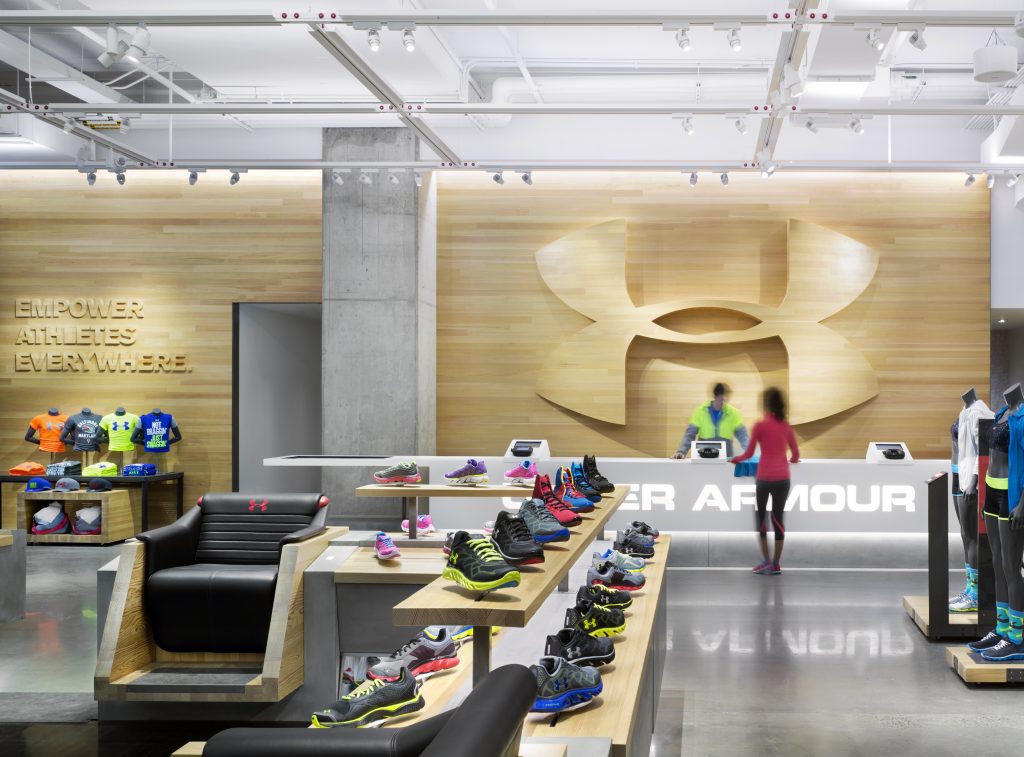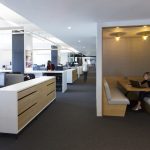Lighting: The Secret Weapon for Optimizing A Building’s Performance

Winston Churchill famously said, “We shape our buildings and afterward our buildings shape us.” Commenting on the bomb-damaged House of Commons in 1943, his point is profound:
We design buildings, and the constraints of the design will shape the people who use the building and the work they do.
Few things can have a bigger impact on a space than the way it’s lit. On a practical level, lighting plays a crucial role in facilitating work, directing movement and signaling the purpose of a space. On top of these, there are also the aesthetic qualities that lighting brings to a space.
Whether designing a building from scratch or revitalizing an existing space, the lighting is a crucial part and should be incorporated early into the design process.
Use light to define the space
The way a space is illuminated creates a sense of place and signals its utility. What does the space need? High-contrast lighting to create a dramatic atmosphere? Soft and warm lighting for a hospitality space? Lighting that color-tunes throughout the day to optimal office worker health and productivity?
Different lights can define the spaces within the building nicely. For example, in an office building, offices, hallways, rest areas and lobbies all call for different lighting to designate them as the distinct areas they are.
Bright white lights can stimulate alertness and cognitive function in the office and conference room spaces, while warmer lights are better for rest areas, as they encourage relaxation. Lights to guide movement facilitate wayfinding in the hallways.
Read the case study here.
Maximize the natural light
Incorporating natural sunlight into your lighting design has the double benefit of improving energy efficiency and improving worker health and performance. Called daylighting, sensors are connected to a building’s lights and they automatically dim the lights when the ambient natural light levels are high enough or when the space is not occupied. This reduces the electricity used to light the space and can significantly enhance worker performance in the space.
Natural light is a potent weapon to increasing productivity, as study after study shows numerous benefits from exposure to natural sunlight—ranging from improved employee health to enhanced performance.
Emulate the natural light
Whether or not your project uses daylighting, it can realize some of the benefits of the sun by making the artificial lights mimic natural light. Natural light changes in brightness and color temperature throughout the day.
If the space enjoys a lot of sunlight during the day, then color-tuned lights will complement the sun and if the space doesn’t receive much sun (like a basement), then color-tuned, human-centric light can make up for that deficiency and create a more comfortable space.
Avoid glare
Glare, whether from the sun or from the light fixtures, is annoying and impedes employee performance. Mitigate the effects of glare by shading the sun (or placing windows where they won’t get direct sunlight, like on the North side of a building) and illuminate the interior spaces with layered lighting.
Lighting in layers—task, ambient and accent lighting—reduces the demand on ceiling-mounted downlights, which decreases glare.
Begin with task lighting that will facilitate the purpose of the space. Then build on that layer with ambient lighting to wash the walls or send indirect light from the ceiling. If necessary, then add accent lighting to highlight the architectural features of the space.
At its most basic level, light helps people see, but it also does so much more. The right lighting in a building will optimize productivity, guide people where they need to go, and set the tone and atmosphere for different spaces.
Discover how Amerlux lighting solutions can serve your end users while also reinforcing the intent of your design.



